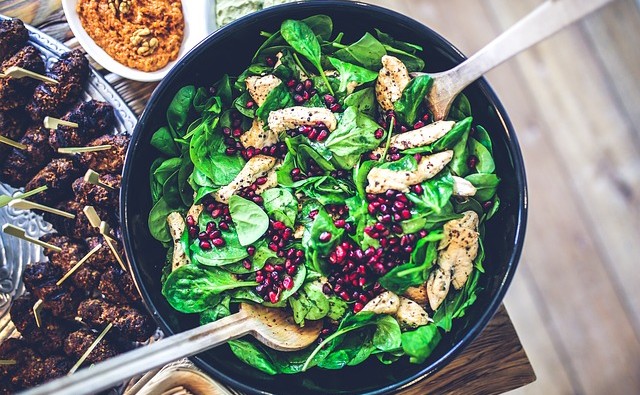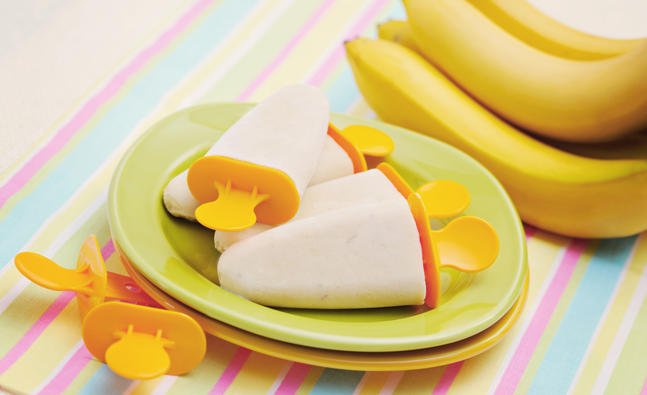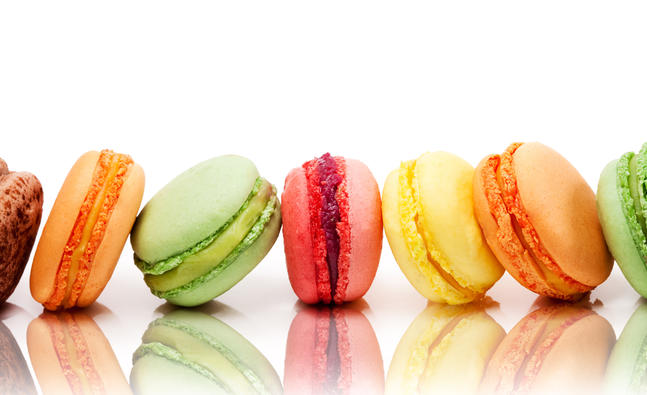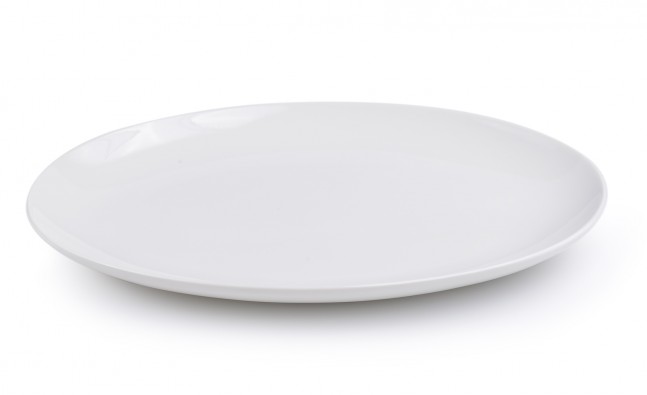How healthy is that salad?

by Susan Bowerman, MS, RD, and CSSD. Susan is a consultant for Herbalife.
Healthy salad vs. unhealthy salad
Salad - it’s one of those words that just screams 'healthy', doesn’t it?
When I think of a salad, I picture a beautiful bowl of leafy greens, tossed with other colourful veggies like orange carrots, purple onions, bright red tomatoes and yellow bell peppers. A salad like that really is the ‘picture of health.’ But some salads have a dark side, too.
We use the term ‘salad’ so loosely now, that we call almost anything tossed together in a bowl – as long as there’s something coating it, flavouring it, or holding it together – a salad. We have green salads, to be sure, but I’ve seen entrée salads on restaurant menus without a veggie in sight – just an overload of meat, cheese and heavy dressing.
Some salads start out with good intentions – in the form of leafy greens and mixed veggies – but then they’re loaded down with crispy noodles, fried chicken strips, cheese or bacon. And, if you were to eat at my grandmother’s house, a 'salad' invariably consisted of a square of neon-red gelatine nestled in a single lettuce leaf (which was usually not eaten), topped with a dollop of mayonnaise.
Salads that pack more calories and fat than a cheeseburger
The problem with many entrée salads is that they’re loaded with fat, so it helps to know where all that fat is coming from. The next time you’re in a restaurant and decide to have a salad, here are a few things to consider.
Ditch the fatty proteins
When you see the word 'crispy' – as in 'crispy' chicken strips, it’s just a nicer way of saying 'fried'. So if you’re having an entrée salad with animal protein in it, look for salads containing chicken, shrimp or fish that’s grilled, rather than fried. And watch out for other high-calorie flesh proteins, too – like sausage or fatty cold meat cuts often make their way into main-dish salads.
Avoid high-fat extras
Many restaurant salads are overloaded with lots of extras that can make the calorie count soar. These fatty calorie bombs include cheese, bacon, fried tortilla strips, crispy fried noodles, onion rings, sour cream and oily croutons.
Choose dressings carefully and use them sparingly
Adding a dressing is one of the quickest ways to undo the nutritional value of an otherwise healthy salad. Creamy or cheesy dressings can cost you 75 calories per tablespoon, and many restaurants serve as much as eight times that amount. And, since that’s what we’re given, many of us assume that’s a normal portion. But few of us can – or should – consume the additional 600 calories from the 60 grams of fat that a half-cup of ranch dressing adds to the mix. Always order your dressing on the side, choose lighter vinaigrettes over creamy dressings, and try the fork-dip method: dip your fork into your dressing, take a stab at your salad and repeat. You’ll get a little taste of the dressing with each bite, but you’ll be surprised at how little you actually use.
Choose salads wisely
When you’re choosing a restaurant salad, be on the lookout for these high-fat ingredients and make adjustments accordingly. Most of the time, it’s as simple as asking that an ingredient or two be left out, and maybe swapping a creamy dressing for an oil-based vinaigrette and having it served on the side. And just a few simple changes can make a huge difference.
A Southwestern-style salad with lettuce, grilled chicken, a few spoons of black beans, a dab of guacamole and some salsa can be a healthy choice – and will probably only cost you about 400 calories. But get your salad fully loaded up with cheese, creamy dressing and served in a fried tortilla shell, and the calorie count triples to more than 1 200.
When it comes to choosing a salad, the bottom line is this: just because a dish is called a 'salad' doesn't automatically make it healthy.
Similarly, a Chinese chicken salad might sound healthy – it usually includes greens or cabbage, grilled chicken, some mandarin oranges and toasted almonds. But it’s the crispy fried noodles and the huge amount of oily/fatty dressing that sends the fat and calorie count soaring. Leave out the fried noodles and keep your dressing portion to around a tablespoon and you’re looking at a reasonable 450 calories or so. But if you eat the salad as the restaurant serves it, you’ll be eating more than 1 000 calories – and the fat equivalent of a huge slice of cheesecake and a portion of large fries.
And use the same principles when choosing side salads, too. A mixed green salad is usually a great choice if you use just a dab of vinaigrette dressing. Fruit salad – as long as it’s not loaded with buttery sugary syrup or a sweet creamy dressing – also makes a great side salad. But watch the starchy side salads with a creamy dressing – even a small portion of potato salad, pasta salad or mayonnaise-heavy coleslaw can cost you several hundred calories.
When it comes to choosing a salad, the bottom line is this: just because a dish is called a 'salad' doesn't automatically make it healthy. I’ve seen recipes for salads made with whipped cream, marshmallows and diced candy bars – so don’t let the word 'salad' sway you. When making your choice, you might want to pay a little less attention to what it’s called, and a lot more attention to what’s in it.
-
Lose Weight While You Sleep
What’s the connection between a lack of shut-eye and a higher number o
-
How too little sleep can cause weight gain
-
Top 10 weight loss tips of 2012
-
Meryl Streeps Brilliant Advice About Women and Weight
Youd never hear such smart advice on body image from Miranda Priestly,
-
The TRUTH About Breakfast and Weight Loss: Does It Really Help You Drop Pounds?
If you want to lose weight, you must eat breakfast; its almost become
-
Are Restaurant Menus Making You Gain Weight?
You might think that youre picking your dinner order based on whatever
- DON'T MISS
- How To Lose Weight On Your Face Easily?
- 7 Quick tips to save calories over suppertime
- 6 Quick tips to whip your tummy into shape
- Avoid deep frying foods for weight loss
- 6 Signs You Need to Rethink Your Weight-Loss Plan
- Eat like a child and lose weight
- Losing weight involves paying attention
- 10 Tips to beat the bulge this festive season
- Tips for a balanced diet and weight loss plan: What is a balanced diet?
- Do these 5 simple things to make today a perfect WEIGHT LOSS day




